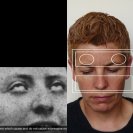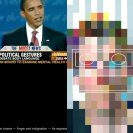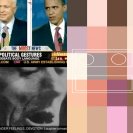In this two-channel installation, we explore the heritage of Duchenne’s smile from the staging and construction of ‘genuine’ expression in the development of 19th century neurological science through to attempts to capture facial expression in contemporary face recognition software. Are images and declarations that ‘real’ expressions have been captured, part of a social and technical ‘machine’ or system of ‘true’ emotions? What affective and institutional politics arise from this typology of ‘real emotions’? A typology which supports such diverse social and organisational forms as: ‘the police’; PR and marketing; the security and the self-help industries.
The Duchenne smile has become a moniker for ‘genuine’ felt facial expression. It’s a smile that is said to only occur spontaneously when the muscle that orbits the eye is active in addition to the muscle that pulls the lip corners up. The term was coined by contemporary psychologist Paul Ekman in 1989, but its namesake is Guillame Duchenne de Bologne, a neurologist hired by Charcot (the founder of neuroscience), to work at the Salpêtrière during the middle of the nineteenth century. While working there, he taught himself photography, which he used in conjunction with an array of electrocution techniques on patients to stage portraits of types of facial emotions. Attached to the patients were various electrodes that would contract the facial musculature into a grim array of emotional states ranging from terror to ‘genuine laughter’. Many of these photographs made their way into Charles Darwin’s popular treatise The Expression of the Emotions in Man and the Animals (1872) as evidence of the evolutionary phylogeny of shared animal-human emotional heritage.
Exhibition History: Albury City Council Public Art Project, Albury Australia. October 2011; FILE Festival, Sao Paolo, Brazil, July 2010; REAL Emergency, Ivan Dougherty Gallery, Sydney August 18–September 22, 2009









